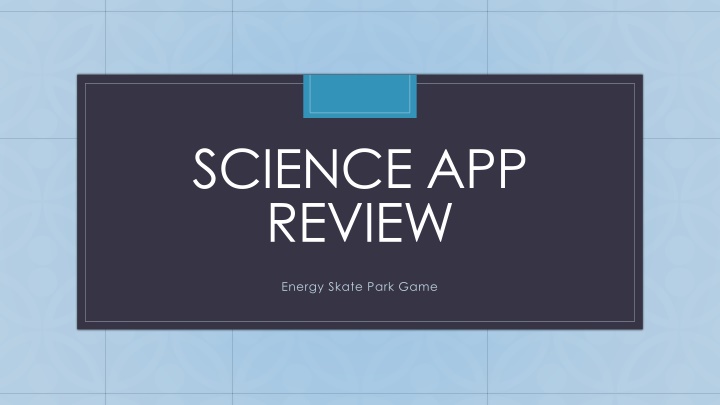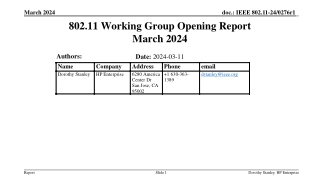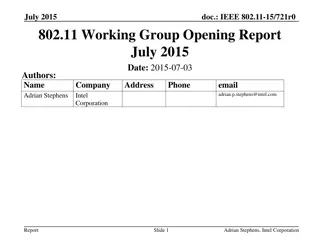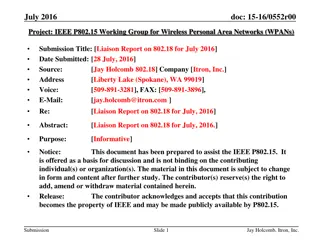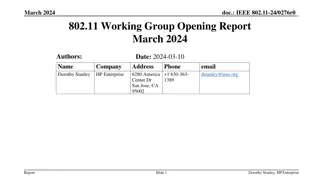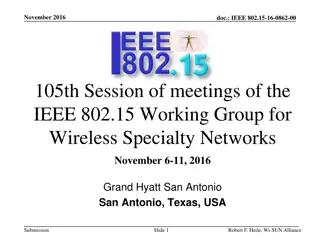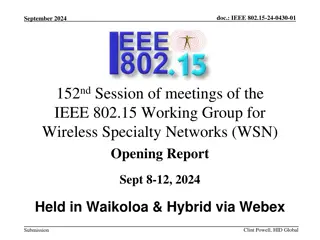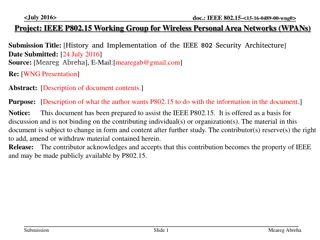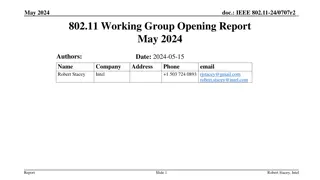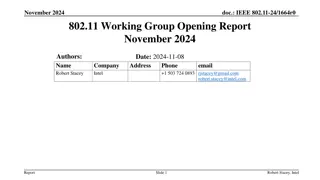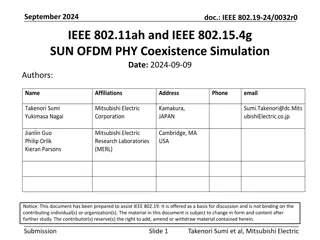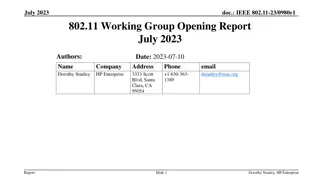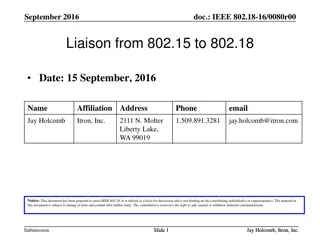IEEE 802.11 Working Group Opening Report - November 2016
Opening report of the IEEE 802.11 Working Group for November 2016 presented by Adrian Stephens from Intel Corporation. It includes subgroup status, meeting decorum guidelines, summary of liaisons (incoming and outgoing), and session documents.
Download Presentation

Please find below an Image/Link to download the presentation.
The content on the website is provided AS IS for your information and personal use only. It may not be sold, licensed, or shared on other websites without obtaining consent from the author.If you encounter any issues during the download, it is possible that the publisher has removed the file from their server.
You are allowed to download the files provided on this website for personal or commercial use, subject to the condition that they are used lawfully. All files are the property of their respective owners.
The content on the website is provided AS IS for your information and personal use only. It may not be sold, licensed, or shared on other websites without obtaining consent from the author.
E N D
Presentation Transcript
SCIENCE APP REVIEW C Energy Skate Park Game
The App: I m going to be reviewing a game from the website: https://phet.colorado.edu/ and I played the game Energy Skate Park. The game features a person on a skate board, with different skate park ramps. You can adjust the mass of the person, the ramps, and many other things.
The Questions 1. Does this app actually help students learn about Science? - in my personal opinion, this app is a great way to learn about the different types of energy. It s interactive, which means that it creates a more personalized experience. 2. What aspect of science is this helping students learn? -It s helping students learn about mass, friction, and the different types of energy that involves skateboarding down a ramp. 3. Is this app easy to use? - At first it was a bit confusing, because the different controls can personalize your experience with this app, but once you get the hang of it, it s very amusing. 4. How does this science app use everyday aspects? -Most people skateboard, so seeing how skateboarding and going down ramps use energy and can go faster or slower, relates to the realness of skateboarding in your everyday life. 5. How does this app help students learn science differently then pen and paper? Using this app can help students see first-hand how different energy is used in everyday life, instead of just memorizing formulas, or reading from a textbook. 6. How can you use this in a classroom? A great way to use this app in the classroom is to have students use this app and report on what they learned.
How the App Works There are three modes in this game: Intro, Friction, and Playground. In intro, it gives you a chart where you can change the mass of the person on the skateboard. You can click the boxes above the mass chart to see different stats, like how fast he s going. You can also change the ramps by clicking on these boxes where the red arrow is. (press space to see the red arrow) You can also pause, go to fast mode, or start over.
Friction mode is the same, except this time you can change -well- the friction! In playground mode, you can create your own fun ramps, a fun and interactive experience for the player. Here are some examples of using the different aspects of the game:
